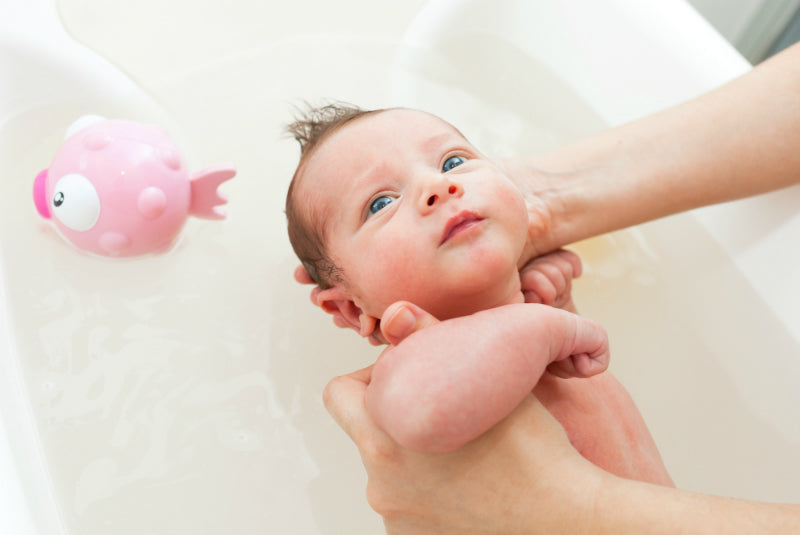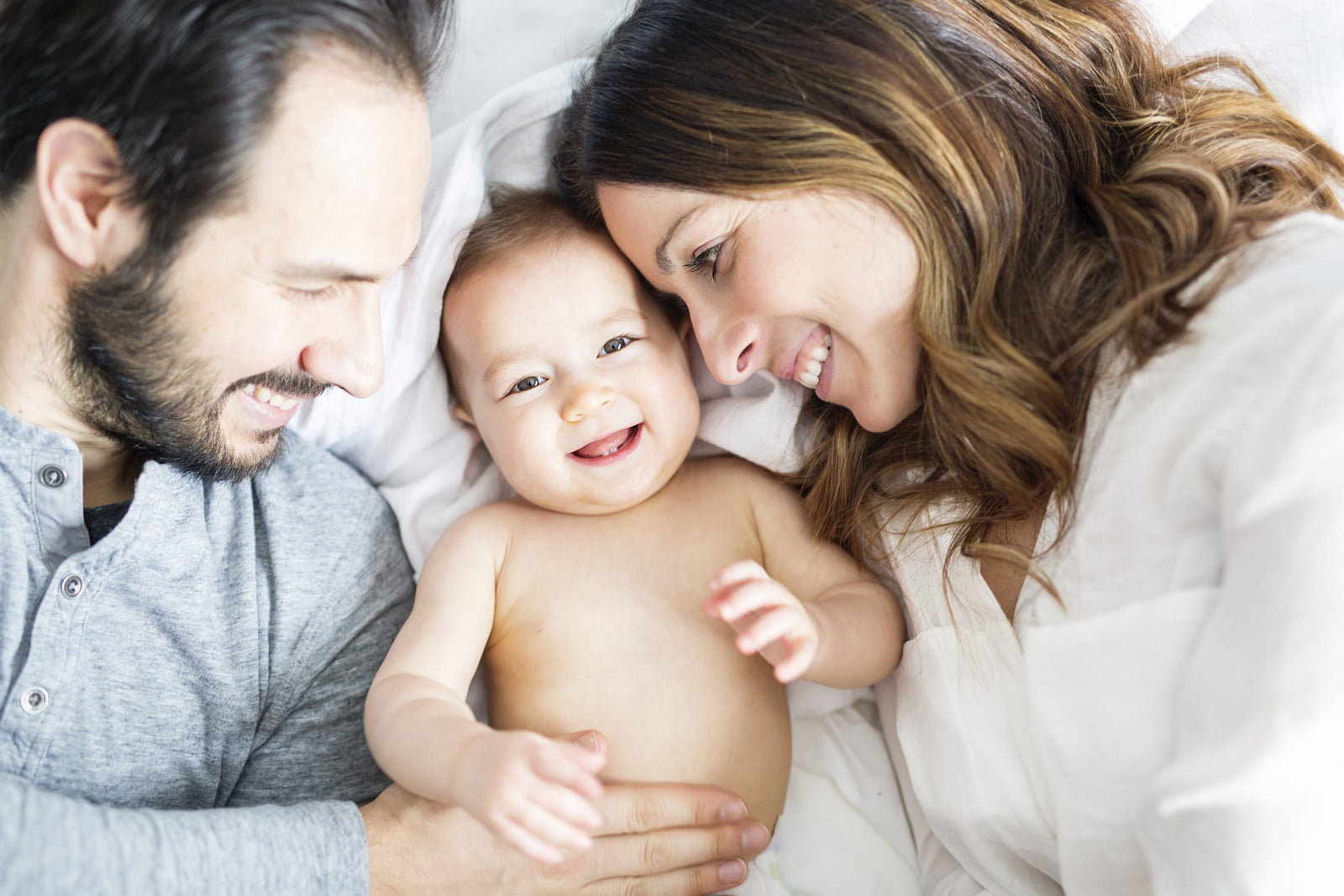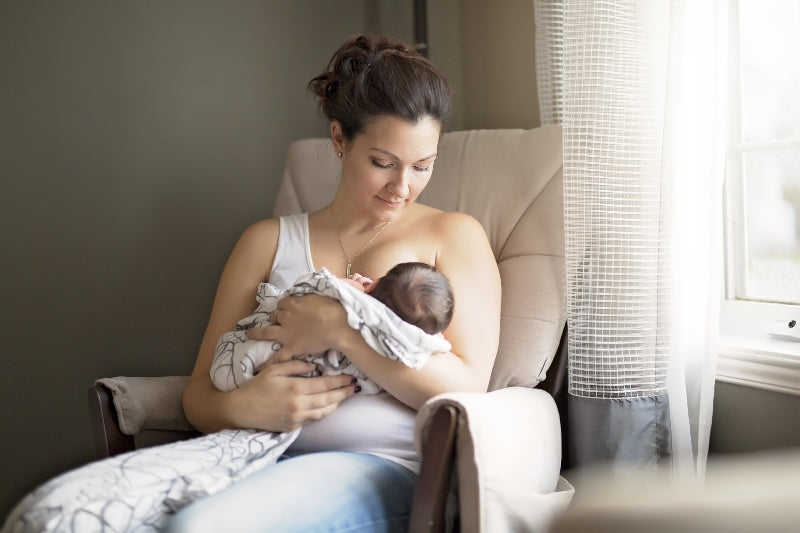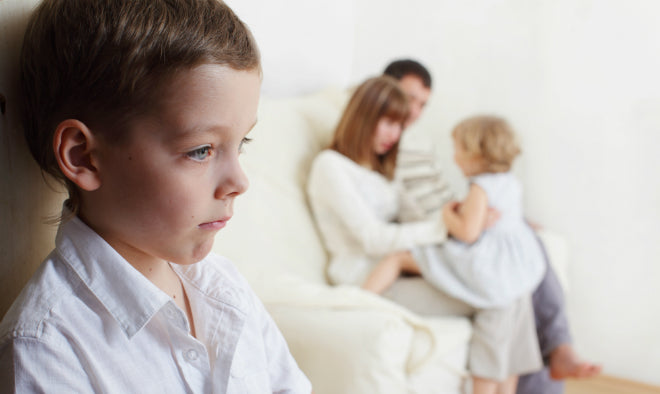" What is good for baby's skin and what you should avoid "
A baby's first bath is something very special. Your little one may still be unsure at first, but over time he will get used to the water and be only too happy to splash around. But for babies to be able to bathe properly, the right conditions must be created. After all, a baby's skin is still soft and can easily be injured. That's why we've put together a comprehensive guide to help you avoid making mistakes.
At what age is the first bath recommended?
In the first few days, a baby does not need to be bathed in a large bath. With a soft washcloth in the evening is completely sufficient. Sensitive skin does not need any further care during this time, as babies do not sweat very much and do not get dirty. Only the diaper area requires somewhat more intensive care and cleaning.

In addition, a newborn should only be bathed once the umbilical cord has fallen off and the navel has healed well. Otherwise, there is a risk of inflammation developing. If everything is in the green, nothing stands in the way of the first bath.
The ideal time of day for the bath will become clear over time. This is because some babies are tired and sleepy afterwards. In this case, a bath in the late afternoon or early evening is ideal.
Other diaper wearers, on the other hand, are lively afterwards. Then the morning is definitely the better time for personal hygiene.

Bathing a newborn
Preparing the bathroom
First prepare the bathroom accordingly if you want to bathe your baby. In the winter months, it must of course be well heated. A room temperature of around 26°C is ideal. Also prepare all the important utensils. You will need towels, preferably nice cozy bath towelsthat are specially designed for children's soft skin.

Tip: Personalized bath towels and hand towels with the child's name or nickname of the child are great gift ideas for a birth or birthday. In addition, a fresh diaper and possibly a clean baby bodysuit is necessary.
If you want to dress your child in a different room, then in addition to the towels you will also need a baby poncho. Not only is it nice and cuddly and soft, it also keeps your little sunshine nice and warm.

What should I bear in mind with regard to the bath water?
Whether you bathe your baby in a large bath tub or a small one is up to you. A smaller version is recommended as you can hold your child better in it. Alternatively, you can buy a special insert and your baby can splash around in a large bath.
After a few months, you can also take your child directly into the bath without any problems. The water should be around 35°C. Use a bath thermometer to check the temperature, as the right water temperature is particularly important for very young children. If you don't have one to hand, hold your wrist under the running water. If it feels neither hot nor cold, then the temperature is optimal. As parents, you will develop a feel for this.

Bath thermometer to check the water temperature
What about bath additives?
We generally advise you not to use bath additives or any form of bubble bath in the bath when bathing your baby. This is because these can irritate the still very sensitive and delicate skin instead of caring for it.
If you want to use a bath additive for your baby, it is best to use special baby oils.
How long should a baby bathe?
This mainly depends on age. Newborns only bathe for a few minutes. An older baby, on the other hand, will enjoy it for longer. Nevertheless, a maximum time of 10 minutes is recommended, as otherwise your little darling will quickly run the risk of freezing. Cooling down should not be underestimated. As the little ones bathe in relatively little water, it cools down more quickly. Before the water gets colder, you should take your child out and dry them quickly with towels.

Getting babies used to bathing
Your baby is not a raw egg and realizes that something new is about to happen. Make sure that you hold your child securely in your arms and prepare them properly for their first bath. Once your child is in the water, hold them firmly and lovingly. This is particularly important because little mermaids are not yet able to sit up on their own. If you are not quite sure and feel too much respect for this task, then ask a midwife to show you how to bathe babies properly.
Tip: For cradle cap, gently rub a little oil into the scalp and carefully wash it out again with clean water. Then comb out the scales with a soft brush.

Getting babies used to bathing
After the bathing experience
When the lovely time in the bath comes to an end, you need to dry your little angel off quickly. Pay particular attention to the skin folds in the crooks of the arms and legs, on the neck, behind the ears and of course in the diaper area. Dab the skin slowly and carefully to do your baby's soft skin some good.
For sore bottoms, pediatricians recommend blow-drying the baby. This sounds quite bizarre at first, but has proven to be effective. But be careful! You have to be very careful! Never get too close to the baby and then only at the lowest setting. If possible, the hairdryer should not be too loud.

Baby after the bathing experience
Toys for a fun bathing experience?
The older your little diaper wearer gets, the more interest in bath toys grows. Of course, nothing beats the good old bath duck. But nowadays there are many more suitable toys. When buying bath toys, make sure that they have been tested for harmful substances and, above all, that they do not contain any small parts that could be swallowed and come loose.










